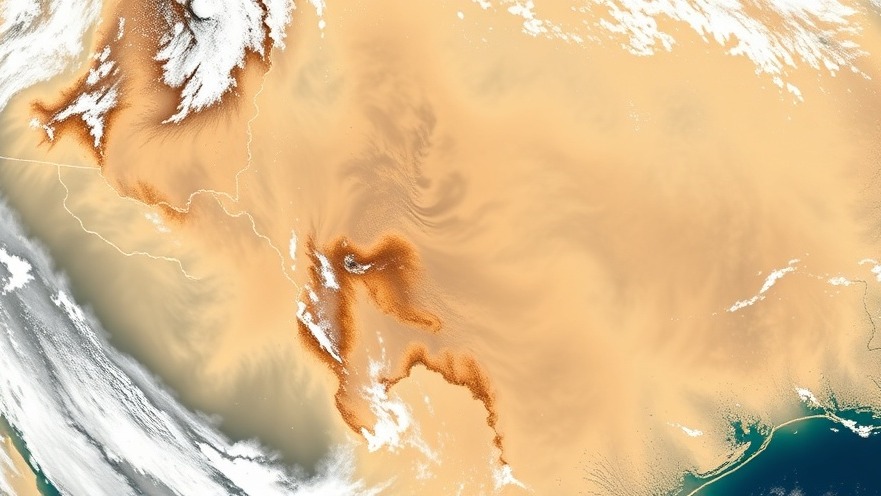
The Arrival of Saharan Dust: What to Expect
Central Texas is set to experience an unusual environmental phenomenon this weekend as a Saharan dust plume makes its way across the Atlantic. This dust, often originating from the dry regions of the Sahara Desert in Africa, is expected to bring not only hazy skies but also rising temperatures. Residents should prepare for significant changes in air quality and visibility, which could affect outdoor activities and health.
Understanding the Source of the Dust Plume
But where is this dust coming from? On Thursday afternoon, meteorologists noted a pronounced dust plume off the coast of Africa, just east of the Cape Verde Islands. This alarming sight is propelled by shifting weather patterns, particularly a high-pressure system combined with a low-pressure system. The resulting pressure gradient in the upper atmosphere sets off continental trade winds that transport this dust thousands of miles across the ocean, creating a significant impact once it reaches land.
Effects on Air Quality and Health
As the Saharan dust arrives in Central Texas, it poses potential health risks. Individuals with respiratory conditions, such as asthma or chronic obstructive pulmonary disease (COPD), may experience heightened symptoms due to the particulate matter in the air. The dust can also carry allergens, which could aggravate seasonal allergies in sensitive individuals. Therefore, it is advisable for those impacted to stay indoors and utilize air purifiers if available.
Weather Forecast for the Week Ahead
This weekend will see the initial waves of dust moving into the area, eventually leading into next week when residents can expect persistently hazy skies. The National Weather Service has indicated that while Central Texas will experience a rise in temperatures, the dust will also contribute significantly to altered air quality. Although it will not be severe enough to trigger air quality alerts in every case, sensitive groups should remain vigilant.
Cultural and Historical Context of Saharan Dust Events
The intrusion of Saharan dust into regions like Central Texas is not a new occurrence. Historically, these events have been recorded for centuries, influencing not just weather patterns but also agriculture and ecosystems. The phenomenon has even been linked to the fertilization of the Amazon rainforest as dust contains vital nutrients that promote plant growth. This historical context emphasizes the interconnectedness of global ecosystems.
Future Projections: Increases in Dust Events
Climate trends suggest that such Saharan dust events may become more frequent as global temperatures rise and weather patterns shift. Researchers are looking into the implications this might have on health, climate change, and even socio-economic factors in affected regions. Communities need to be prepared for more intense episodes, which could pose challenges not just for air quality but also agriculture and water sources.
What You Can Do
Being informed is the first step in mitigating the potential health impacts of these dust storms. Here are some practical tips you can implement this weekend:
Limit outdoor activities, especially strenuous exercises.
Keep windows and doors closed to prevent dust from entering your home.
Use air purifiers to maintain indoor air quality.
Stay hydrated and monitor local weather updates for the latest air quality reports.
Keeping the Community Informed
As Central Texas prepares for this Saharan dust event, keeping the community informed is vital. Residents are encouraged to stay updated with local news resources to navigate these changing conditions effectively. For consistent air quality updates and weather forecasts, tuning into KVUE is advisable, as they will provide real-time alerts that ensure everyone is aware of the ongoing weather developments.
Conclusion
The Saharan dust plume arriving in Central Texas presents both challenges and intriguing insights into global weather patterns. As we brace for hazy skies and warmer temperatures, it's crucial to remain vigilant about personal health and community awareness. Together, we can navigate through this weather system with informed decisions and proactive measures.
 Add Element
Add Element  Add Row
Add Row 



 Add Row
Add Row  Add
Add 


Write A Comment